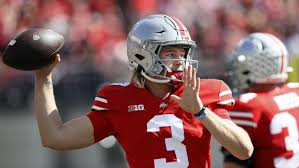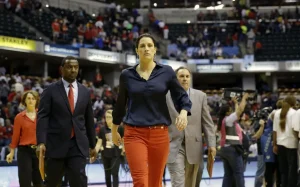
Did NIL expenditures determine the Ohio State Buckeyes’ National Championship outcome?
Did NIL Expenditures Determine the Ohio State Buckeyes’ National Championship Outcome?
The Ohio State Buckeyes, one of the most storied football programs in college sports history, have consistently been contenders for national titles. However, in recent years, the landscape of college football has been dramatically reshaped by the introduction of Name, Image, and Likeness (NIL) rights. NIL, which was officially introduced in July 2021, allows college athletes to profit off their personal brand, creating a new dimension of recruiting, team-building, and financial influence in college sports. As Ohio State continues to maintain its place among the elite programs in the country, a central question has emerged: Did NIL expenditures play a determining role in the Buckeyes’ path to—or away from—a National Championship?
To answer this question, we need to explore several aspects of how NIL impacts recruiting, roster construction, player development, and competitive balance. We’ll delve into Ohio State’s NIL strategies, the impact of NIL on player performance, and how these financial advantages—combined with the traditional elements of coaching, talent development, and institutional support—have affected the Buckeyes’ title hopes.
The Emergence of NIL in College Sports
Before we can analyze NIL’s impact on Ohio State’s championship trajectory, it’s essential to understand what NIL is and how it affects college football. The NCAA, which had long prohibited athletes from profiting from their names, images, or likenesses, reversed its stance in 2021 after intense pressure from lawmakers, athletes, and public opinion. This shift allowed college athletes to sign endorsement deals, profit from social media, and earn money from autographs and appearances.
This move was monumental because it fundamentally changed the way that college athletics operates. Now, athletes at top programs—like Ohio State—can leverage their platform to secure lucrative deals with companies and brands. The amount of money that athletes can make through NIL varies widely, but it has the potential to shift the balance of power in recruiting and retention.
For a program like Ohio State, which has a vast alumni network, a massive fanbase, and access to powerful corporate partnerships, NIL represents both a new recruiting tool and a potential source of financial advantage over other schools. But does this financial advantage translate directly into on-field success and National Championship victories?
Ohio State’s Role in the NIL Era
Ohio State’s response to the NIL changes has been multifaceted. The university and its athletic department quickly mobilized to support student-athletes in navigating the new landscape. Ohio State’s approach has been centered on creating a sustainable NIL ecosystem for its athletes, with partnerships with local businesses and national brands.
The Buckeyes’ strategy has been to focus on creating opportunities that will not only benefit star athletes but also give more players on the roster a chance to capitalize on their NIL potential. Ohio State players have signed deals with major companies like Nike, Wendy’s, and local businesses in Columbus, which have helped to provide significant revenue streams for some athletes. Additionally, Ohio State has supported initiatives like NIL-focused education programs, advising players on how to maximize their marketability and manage their earnings.
Moreover, Ohio State has emphasized maintaining a competitive edge through NIL without compromising the integrity of the program. In some ways, NIL deals may have enabled Ohio State to retain high-profile recruits who might otherwise have been swayed by offers from other programs. By providing ample NIL opportunities, the Buckeyes have ensured that top-tier athletes are motivated to stay in Columbus, which could help explain their sustained success on the field.
NIL and Recruitment
Recruiting has long been a key driver of success in college football, and NIL has quickly become an integral part of the recruiting process. The new NIL rules have effectively created an arms race among programs to offer the most lucrative deals to high school recruits and transfer portal players. Elite prospects now have the opportunity to consider not only the traditional factors like playing time, coaching, and campus culture, but also the financial opportunities available through NIL.
Ohio State has long been a recruiting powerhouse, attracting top talent from across the country. The introduction of NIL has only amplified the program’s ability to compete in the national recruiting landscape. With the Buckeyes’ extensive resources, established brand, and strong presence in the media, Ohio State has been able to offer some of the most enticing NIL opportunities in the country. For players who have the potential to make a name for themselves at a national level, Ohio State’s established platform is incredibly attractive.
In this context, it’s fair to say that NIL has given Ohio State an advantage in recruiting, especially in terms of retaining key players and attracting top-tier talent. But does this advantage necessarily translate into National Championship victories? The answer is more nuanced.
The Role of NIL in Player Retention
One of the most significant impacts of NIL has been its role in player retention. In the past, elite athletes would often leave for the NFL after three years of college eligibility, with financial considerations largely limited to potential NFL salaries. Today, however, NIL offers college players the opportunity to earn significant sums of money while still in school. This means that star players who might have otherwise declared for the NFL draft may choose to stay in school for longer, providing programs like Ohio State with greater continuity and stability.
For Ohio State, NIL has been instrumental in retaining top-tier players who could have gone pro. Players like quarterback C.J. Stroud, wide receiver Marvin Harrison Jr., and defensive end J.T. Tuimoloau have all benefited from NIL deals, which may have influenced their decisions to remain at Ohio State for another season rather than jump to the NFL. This continuity has allowed the Buckeyes to maintain their competitive edge by keeping their best players on the field for extended periods.
On-Field Impact of NIL: Talent and Depth
While NIL offers financial incentives, it is ultimately on-field performance that determines championships. So, the critical question is whether NIL expenditures directly translate into improved player performance or greater team success. The answer lies in the combination of NIL and traditional recruitment and player development.
The Buckeyes have long been known for their ability to recruit elite talent and develop that talent into high-level players. With NIL now in the equation, the ability to retain and enhance that talent has only increased. For example, the recruitment of quarterbacks, running backs, and wide receivers has been enhanced by the financial benefits players can expect from NIL deals. Players who might have been wooed by other programs with offers of immediate financial compensation now have the opportunity to stay in Columbus and secure similar, if not superior, opportunities.
Moreover, NIL deals can provide financial support that allows athletes to focus more fully on their development. For example, NIL revenue could be used for additional training, nutrition, or recovery resources that were previously unavailable. As a result, players at Ohio State may be able to reach their full potential more effectively than at other schools without the same NIL opportunities. This could be a factor in Ohio State’s ability to consistently field talented, well-prepared teams.
NIL and Competitive Balance
One of the biggest criticisms of NIL is that it has created an uneven playing field across college football. Schools with larger budgets, wealthier alumni bases, and more extensive brand recognition—such as Ohio State—are in a better position to capitalize on NIL than schools with fewer resources. This imbalance has raised concerns that the wealthiest programs, like Ohio State, may dominate recruiting and eventually claim a disproportionate share of National Championships.
While Ohio State’s NIL strategy undoubtedly gives the program an edge, it is not a guarantee of championship success. The college football landscape is still highly competitive, and success in the NIL era is determined by a combination of factors, including coaching, player development, and game execution. Programs like Alabama, Georgia, and Clemson also have significant NIL resources and have made major strides in securing top talent. As such, while NIL may provide a recruiting advantage, it does not single-handedly determine championship outcomes.





